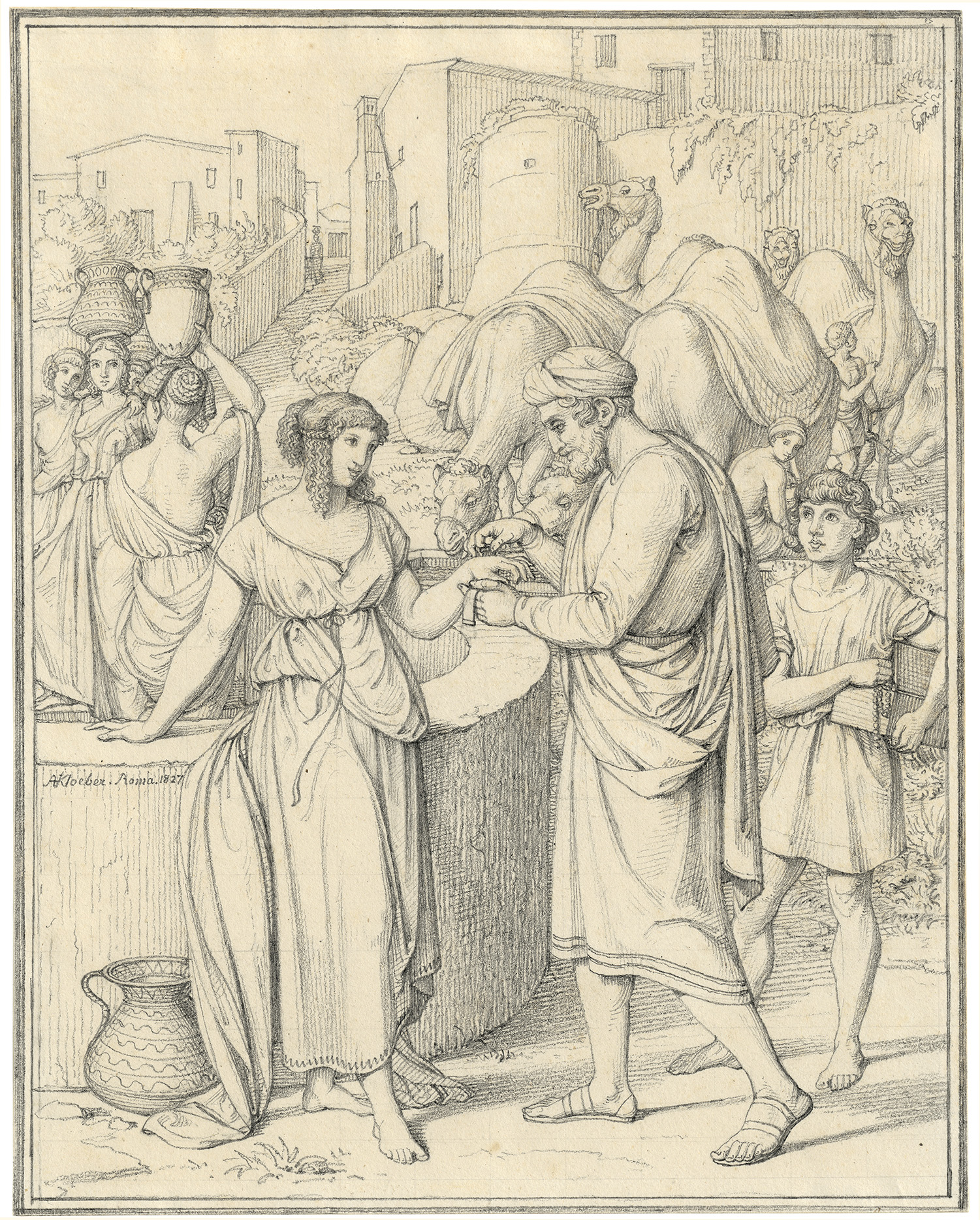Loading the page ...
August von Kloeber
(1793 Breslau – 1864 Berlin)
Rebecca and Eliezer at the Well. Drawing in pencil. 21 x 16.7 cm. Signed and dated “AKloeber. Roma.1827” on the left of the well.
Carl Friedrich August von Kloeber’s very eventful biography mirrors the social upheavals of his time. Kloeber first attended the Berlin Cadet School in 1805/06 before going on to study architecture at the Breslau School of Architecture and then painting at the Berlin Academy, where he enrolled in 1810.
In 1813/14 he took part as a volunteer in the wars of liberation against Napoleon and saw action in the battles at Groß-Görschen, Bautzen and just outside Paris, where he subsequently stayed for a while to continue his artistic studies before going on to work in Vienna for four years. At the instigation of Karl Friedrich Schinkel, Kloeber was called to Berlin, where he took part in the painting of the newly built playhouse in 1820. The next stage in his artistic career took him to Italy, where he stayed from 1821 to 1828 on a scholarship from the Prussian Ministry of Culture, enjoying close contact in Rome with Bonaventura Genelli and the Nazarene artists. Following his return to Berlin, Kloeber initially became a member and later a professor at the Academy of Art, giving a class in composition from 1854.
As a painter, Kloeber concentrated for the most part on the depiction of mythological motifs. His oeuvre also includes a number of portraits, genre scenes and landscapes, although his main emphasis is on historical paintings with evocative, carefully composed scenes on allegorical and mythological themes and – less frequently – literary and religious subjects. The present drawing in pencil with the Old Testament scene of the meeting between Rebecca and Eliezer at the well is dated 1827 and was thus made at the time Kloeber was in Italy. The drawing could well be a design for a wall painting. However, the overall arrangement is so fine and detailed that it ranks as a first-class work in its own right. The linear purism and the subtlety of the linework are unmistakeable signs of Nazarene stylistic principles. The subtly and skilfully arranged composition makes it clear why Nagler paid tribute to the artist as a “master of composition”.
